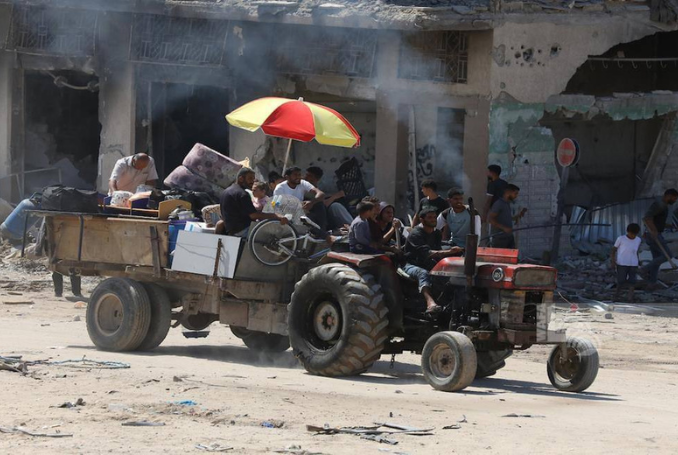
At least 35 Palestinians were killed and 129 wounded as Israeli forces carried out new massacres in the eastern and southern areas of Rafah.
The United States reportedly suspended sending arms shipments to Israel, due to its failure to address our concerns regarding its plans to invade Rafah.
Al-Qassam Brigades and Al-Quds Brigades announced in a statement that they are engaged in fierce clashes with invading Israeli forces east of Rafah.
According to Gaza’s Ministry of Health, 34,844 Palestinians have been killed, and 78,404 wounded in Israel’s ongoing genocide in Gaza starting on October 7.
Click here for the previous blogs.
LATEST UPDATES
Wednesday, May 8, 01:30 am (GMT +2)
Hamas (Izzat al-Rishq, a member of the political bureau of Hamas):
Israel is not serious about reaching an agreement and is using negotiations as a cover to invade Rafah.
Netanyahu is trying to invent pretexts to evade negotiations and blames Hamas and the mediators.
Hamas’s approval of the mediators’ proposal confused Netanyahu and put him in trouble.
Hamas stands by its position regarding the proposal.
BIDEN:
If Israel enters Rafah, I will not provide it with the weapons historically used to deal with this problem.
We will not provide weapons and artillery shells to Israel.
Israel will not get our support if it enters the populated areas of Rafah.
The bombs that America gave to Israel have now been used to kill civilians.
AL-JAZEERA: Heavy Israeli shelling targeted the Al-Sabra neighborhood south of Gaza City.
‘I Held on to My Husband’ – Cancer Patients in Gaza Die from War and Siege

By Abdallah Aljamal – Gaza “I held on to my husband, and told him he was everything for me, that I didn’t want to lose him.” Cancer patients from Gaza, including children, have been systematically … Continue reading‘I Held on to My Husband’ – Cancer Patients in Gaza Die from War and Siege Palestine Chronicle
Wednesday, May 8, 12:50 am (GMT +2)
HAARETZ: Clashes took place between families of captives in Gaza and Israeli police officers at a Tel Aviv demonstration demanding an exchange deal.
UNICEF: 600,000 Palestinian children are seeking shelter in the southern Gaza Strip city of Rafah, some of whom have been displaced several times, exhausted, traumatized, sick and hungry.
With Full Knowledge – Israel Found to Use US Weapons to Kill Health Workers in Lebanon
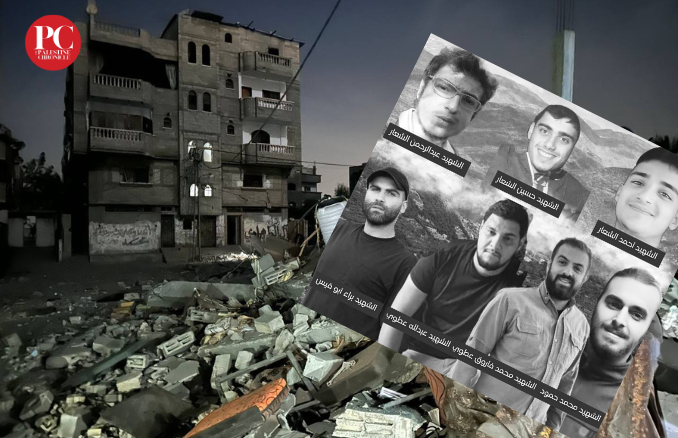
By Robert Inlakesh On March 27, Israel carried out a missile strike in the Southern Lebanese town of Hebbariyeh, hitting an ambulance center. An analysis of shrapnel from the scene of an Israeli attack that … Continue readingWith Full Knowledge – Israel Found to Use US Weapons to Kill Health Workers in Lebanon Palestine Chronicle
Tuesday, May 7, 11:00 pm (GMT +2)
FORMER ISRAELI CHIEF OF STAFF: Former Israeli Chief of Staff Aviv Kochavi said that stopping the war on the Gaza Strip is the only way to return Israeli prisoners held by the Resistance.
ISRAELI ARMY: An Israeli soldier was injured as a result of a shell fired by the resistance in the Kerem Shalom area in the southern Gaza Strip.
FREE UNIVERSITY OF BRUSSELS: The Free University of Brussels decided to stop a technological research project with Israeli partners, and to review all other projects with Israeli participation.
HEZBOLLAH: We targeted “with artillery shells a force of Israeli enemy soldiers in the vicinity of the Ramia site, and we achieved a direct hit.”
Tuesday, May 7, 10:00 pm (GMT +2)
KAN: Israeli Prime Minister Benjamin Netanyahu’s office is working on a draft law proposal with the ultra-Orthodox parties, bypassing Defense Minister Yoav Gallant and Defense Council Minister Benny Gantz.
ISRAELI MEDIA: Netanyahu backed down from showing flexibility in exchange negotiations.
UNRWA: The crossings must be opened, and humanitarian aid must flow.
HAMAS: The probability of the occupation remaining in the Gaza Strip is zero.
CHANNEL 14: Israeli occupation army evacuated a temporary military site on the Gaza envelope, fearing that resistance elements would infiltrate it.
‘Manipulative Trap’ – Smotrich Slams Decision to Send Negotiation Team to Cairo
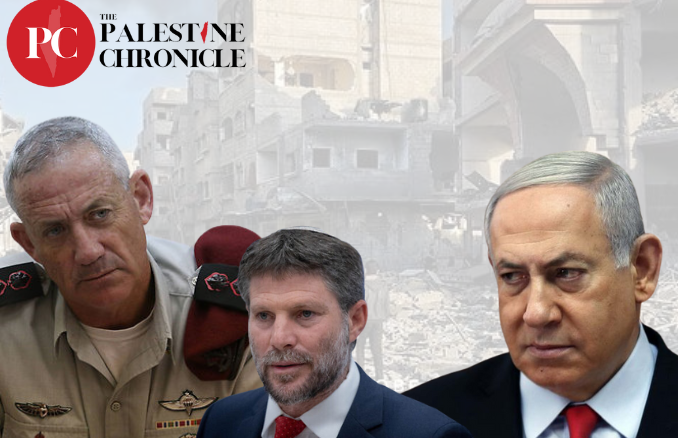
By Palestine Chronicle Staff “You must not give in to international pressure and you must not stop until victory and the submission of the enemy,” Smotrich said. Israeli Finance Minister Bezalel Smotrich has said … Continue reading‘Manipulative Trap’ – Smotrich Slams Decision to Send Negotiation Team to Cairo Palestine Chronicle
Tuesday, May 7, 9:00 pm (GMT +2)
ISRAELI ARMY: Gaza is one of the most difficult battlefields in the world.
CHANNEL 13 (quoting Israeli official): Netanyahu does not enable us to advance negotiations on the swap deal.
BRITISH PM: We will not change our position on arms export licenses to Israel.
‘Sort of a Precaution’ – US Lawmakers Prepare Sanctions against ICC over Israel
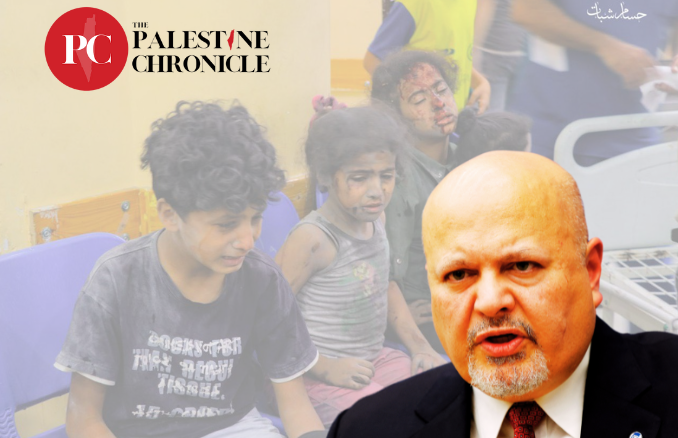
By Palestine Chronicle Staff US House Foreign Affairs Committee Chairman Michael McCaul (R-Texas) has confirmed that the bill is being drafted. US House Republicans are developing a bill to impose sanctions on officials from … Continue reading‘Sort of a Precaution’ – US Lawmakers Prepare Sanctions against ICC over Israel Palestine Chronicle
Tuesday, May 7, 8:00 pm (GMT +2)
CNN: Tel Aviv asked Washington to put pressure on Hamas and not on Israel.
HAMAS: We demand that the occupation’s crimes be documented and submitted to the criminal court.
Rafah Under Attack – Scores of Civilians Killed, Resistance Fights Back
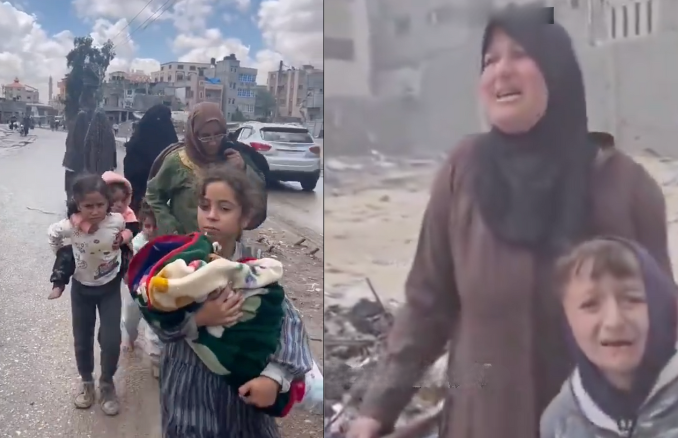
By Palestine Chronicle Staff Scores of Palestinians were killed and others were injured, in the intense Israeli occupation bombardment on various areas of the Gaza Strip. According to the official Palestinian news agency WAFA, … Continue readingRafah Under Attack – Scores of Civilians Killed, Resistance Fights Back Palestine Chronicle
Tuesday, May 7, 6:30 pm (GMT +2)
WALLA (quoting Israeli sources): The office of Israeli Prime Minister Benjamin Netanyahu hid medical markings on an ambulance that had been accompanying Netanyahu’s convoy since he suffered a heart attack last month, in order to make it look like a regular civilian car.
UNRWA: Protest by Israeli extremists in front of our headquarters in Jerusalem is “intimidation and sabotage”.
NETANYAHU’S SPOKESMAN: The seizure of the Palestinian side of the Rafah crossing in the southern Gaza Strip by the Israeli army does not violate the peace treaty between Tel Aviv and Cairo.
UNRWA: The agency’s buildings in Gaza were subjected to 368 Israeli attacks.
ISRAELI ARMY RADIO: Iron Dome was unable to intercept rockets launched by the Resistance from Gaza towards Shlomi.
AUSTIN: We are absolutely committed to Israel’s right to defend itself.
FORMER MOSSAD CHIEF: There is no meaning to fighting in Rafah after all these days since the start of the war.
CHANNEL 13: Eight rockets were launched from the Gaza Strip towards Shlomi in the Eshkol Regional Council in the Gaza Strip.
HEZBOLLAH: We carried out an attack with assault marches on the headquarters of the newly created Western Brigade in Ya’ra, and a direct hit was achieved.
RUSSIAN FOREIGN MINISTRY SPOKESWOMAN: Carrying out an Israeli ground military operation in Rafah destabilizes the entire region. There are no prospects yet for resolving the situation in the Gaza Strip, and the conflict in the region is escalating daily.
‘Sleeping without Fear’ – Gazans React to Hamas’ Acceptance of Ceasefire Proposal

By Abdallah Aljamal – Gaza The Palestine Chronicle spoke with residents of Gaza to know their view about the proposal and Hamas’ decision. The Palestinian Resistance Movement Hamas announced on Monday its acceptance of a … Continue reading‘Sleeping without Fear’ – Gazans React to Hamas’ Acceptance of Ceasefire Proposal Palestine Chronicle
Tuesday, May 7, 5:00 pm (GMT +2)
ISRAELI ARMY RADIO: Summer will be hot on the Lebanese border.
WASHINGTON DC POLICE CHIEF: 33 people were arrested during the dispersal of the George Washington group sit-in.
‘Unusual’ – US Postpones Arms Shipment to Israel but Pledges ‘Ironclad Commitment’

By Palestine Chronicle Staff If intentional, this pause on the JDAMs would mark a significant policy shift since the onset of the current war. The US administration of Joe Biden administration has postponed the … Continue reading‘Unusual’ – US Postpones Arms Shipment to Israel but Pledges ‘Ironclad Commitment’ Palestine Chronicle
US OFFICIAL (to Al-Jazeera): Washington’s position on Rafah has not changed, and a broad operation must not be launched.
UNRWA: We did not receive aid or fuel through the Rafah crossing.
NBC (citing Israeli official). There is deep frustration in the Israeli government with the American decision to halt the arms shipment.
Tuesday, May 7, 4:15 pm (GMT +2)
GAZA STRIP CROSSINGS AUTHORITY: The Gaza Strip Crossings Authority denied Israel’s claims that it had reopened the Kerem Shalom crossing, south of the Strip, for the entry of aid.
AL-JAZEERA: About 200 European Union employees demonstrated in the Belgian capital, Brussels, against the Union’s policies towards the Gaza Strip.
‘A Form of Occupation’ – Palestinian Groups Reject Any Foreign Control of Rafah Crossing

By Palestine Chronicle Staff Palestinian groups have strongly rejected any foreign party controlling the Rafah border of the Gaza Strip, following reports that an American security company will be in charge of the crossing. … Continue reading‘A Form of Occupation’ – Palestinian Groups Reject Any Foreign Control of Rafah Crossing Palestine Chronicle
AL-QASSAM BRIGADES: The Izz al-Din al-Qassam Brigades announced the bombing of Israeli occupation forces’ concentrations at the “Kerem Shalom Military Site” with a 114 mm short-range “Rajoum” missile system.
Tuesday, May 7, 2:45 pm (GMT +2)
GAZA GOVERNMENT MEDIA OFFICE: A third mass grave was found inside the Shifa Medical Complex and 49 bodies were recovered.
AL-JAZEERA: Six workers were injured by occupation fire at the Kerem Shalom crossing.
AL-QUDS BRIGADES: We bombed with heavy-caliber mortar shells Israeli occupation soldiers and vehicles penetrating the vicinity of the airport, east of the city of Rafah.
ISRAELI ARMY: 3,361 Israeli soldiers have been injured since the start of the war on Gaza.
GAZA HEALTH MINISTRY: 34,844 Palestinians have been killed, and 78,404 wounded in Israel’s ongoing genocide in Gaza starting on October 7.
US MEDIA: Metropolitan Police began evacuating a pro-Palestinian camp at George Washington University at dawn today.
Tuesday, May 7, 1:30 pm (GMT +2)
AL-JAZEERA: Rockets were launched from southern Lebanon towards the Israeli monk site in the Upper Galilee.
ISRAELI MEDIA: The Israeli army is investigating the downing of its drone in Kfar Saba, between Jaffa and Tulkarm.
HEZBOLLAH: We targeted two buildings used by Israeli army soldiers in the Hanita settlement.
PALESTINIAN MEDIA: The death toll from the Israeli bombing on the Al-Qara family’s home in the Khuza’a area, east of Khan Yunis, has risen to three.
Tuesday, May 7, 12:30 pm (GMT +2)
HEZBOLLAH: We targeted a building used by Israeli soldiers in the Metulla settlement, and two other buildings in the Shlomi settlement in the Upper Galilee.
YEDIOTH AHRONOTH: The Israeli army downplayed the US administration’s suspension of an arms shipment following an Israeli military operation in the city of Rafah in the southern Gaza Strip this week, saying that the two allied parties resolve any disputes “behind closed doors.”
Tuesday, May 7, 11:30 am (GMT +2)
PALESTINIAN FACTIONS: We will not accept the imposition of any guardianship over the Rafah crossing or any other party, and we consider this an occupation.
CHANNEL 13: An anti-tank missile hit a house in the town of Metulla.
PALESTINIAN MEDICAL SOURCES: The bodies of 35 Palestinians and 129 wounded arrived at Kuwait Hospital in Rafah within 24 hours.
IRANIAN FM: Conditions are ripe for a permanent ceasefire in Gaza.
Tuesday, May 7, 10:00 am (GMT +2)
DOCTORS WITHOUT BORDERS: The attack on Rafah will have catastrophic effects on more than a million people.
KEREM SHALOM: Kerem Shalom crossing reopened for the entry of humanitarian aid after it was closed.
QATARI FM: Qatar strongly condemns the bombing of Rafah and calls for preventing its invasion.
AL-QUDS BRIGADES: We are engaged in fierce clashes east of Rafah.
MAARIV: Finance Minister Bezalel Smotrich submitted a petition to Prime Minister Benjamin Netanyahu to stop delaying legislation on the use of Palestinian Authority funds held by Israel .
ISRAELI MEDIA: Instructions were issued to farmers in the Gaza Strip not to go out to work in the areas adjacent to the border fence.
Tuesday, May 7, 09:00 am (GMT +2)
BEN-GVIR: The demolition of dozens of homes in the Negev is an important step towards restoring governance.
AL-JAZEERA: Occupation forces begin demolishing dozens of Palestinian homes in the Naqab (Negev).
AL-QASSAM BRIGADES: Our fighters are engaged in fierce clashes with the Israeli enemy forces penetrating east of the city of Rafah in the southern Gaza Strip.
UNRWA: UNRWA called for the reopening of Gaza crossings without any delay, noting that vital supplies and fuel are entered through them.
ISRAELI MEDIA: Dozens of prisoners’ families are closing the main Ayalon axis in Tel Aviv, demanding a deal to return their children.
Tuesday, May 7, 08:00 am (GMT +2)
AL-JAZEERA: An Israeli air strike targeted the vicinity of the destroyed Gaza Airport, east of the city of Rafah, in the southern Gaza Strip.
PALESTINIAN MEDIA: A woman was killed and a number of injured in an Israeli artillery shelling that targeted the town of Khuza’a, east of Khan Yunis, in the southern Gaza Strip.
AFP (citing US official): We suspended sending an arms shipment to Israel of 1,800 1,000-pound bombs and 1,700 500-pound bombs. Suspending the shipment of weapons to Israel due to its failure to address our concerns regarding its plans to invade Rafah.
Tuesday, May 7, 05:00 am (GMT +2)
NBC (citing US officials): American, Qatari and Egyptian negotiators are trying in Cairo to resolve various disagreements regarding the ceasefire deal.
AXIOS (citing American source): Republican representatives are preparing legislation targeting international criminal officials.
Tuesday, May 7, 03:00 am (GMT +2)
WASHINGTON POST (quoting US official): The move by the administration of US President Joe Biden to postpone two arms shipments to Israel confirms Washington’s fears about the Rafah attack.
PALESTINIAN MEDIA: An Israeli raid and artillery shelling in the center and north of the Gaza Strip.
Tuesday, May 7, 02:00 am (GMT +2)
REUTERS (citing informed source): CIA Director William Burns will travel to Israel on Wednesday to hold talks with Israeli Prime Minister Benjamin Netanyahu and other senior officials.
BRITISH DEPUTY FOREIGN SECRETARY: Israel’s attack on Rafah would violate international law and would not lead to the elimination of Hamas.
Tuesday, May 7, 01:00 am (GMT +2)
MARTIN GRIFFITHS: Martin Griffiths said that Israeli evacuation orders in Rafah and the ground operation will lead to more death and displacement.
REUTERS (quoting informed sources): The administration of US President Joe Biden will not submit its report to Congress on whether Israel is violating international law in Gaza on time.
BLINKEN: Blinken condemns “extremist attacks” on aid heading from Jordan to Gaza.
Tuesday, May 7, 12:00 am (GMT +2)
YEDIOTH AHRONOTH: CIA Director William Burns will arrive in Israel tomorrow, Wednesday, to meet with Prime Minister Benjamin Netanyahu and Mossad Chief David Barnea to discuss a possible deal for a ceasefire in Gaza and the exchange of prisoners.
(The Palestine Chronicle)

Donate NOW Learn More Watch Video
Filed under: "Israel", American crimes, Egypt, Israeli Crimes crimes against humanity, Lebanon, Lebanon Islamic Resistance - Hezbollah, Palestine, Palestinian people, Qatar, UN Palestinian Refugee Agency (UNRWA), USA | Tagged: Al-Jazeera, Al-Qassam Brigades, Al-Quds Brigades, Anglozionist Genocidal War on Gaza, Aviv Kochavi, Benjamin Netanyahu, Benny Gantz, Besieged Gaza Strip., Bezalel Smotrich, Children of Gaza, Defense Minister Yoav Gallant, Gaza envelope settlements, Haaretz, Hamas Resistance movement, Hebrew newspaper “Yedioth Ahronoth”, International Criminal Court (ICC), Israeli Media, Israeli Occupation Force IOF, Khan Yunis, Lebanese town of Hebbariyeh, Mass graves in Gaza, Ministry of Health in Gaza, Palestinian Resistance factions, Prisoner swap, Rafah Invasion, The death toll in Gaza, The Israeli settlement of Metulla, US President Joe Biden’s administration, Wafa | Leave a comment »












